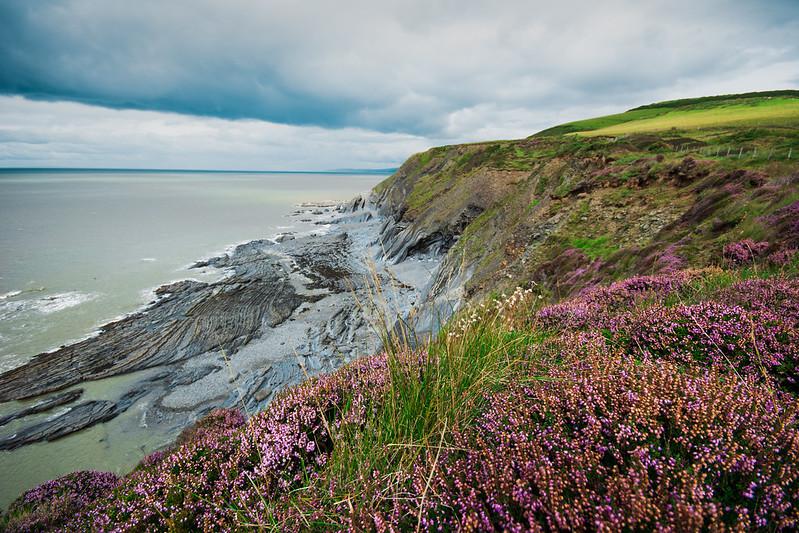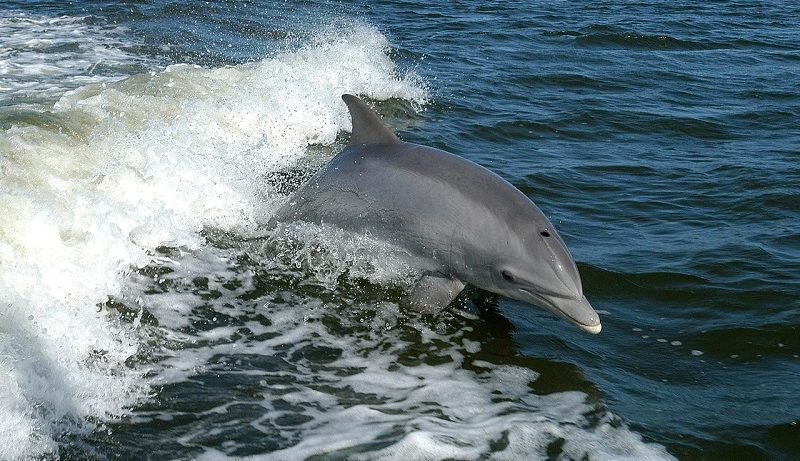Welsh Atlantis
Cardigan Bay is a prominent feature on Wales’ landscape, forming a curved arc that stretches for many miles along the country’s western coast. It connects Gwynedd in the north with Pembrokeshire in the south and is characterised by numerous beaches, estuaries and cliffs. The bay is also the location of the legendary Cantre’r Gwaelod – an ancient sunken kingdom said to have once occupied the area towards the north of the bay. Sometimes described as the “Welsh Atlantis”, the kingdom features in a variety of local folklore and literature. While evidence of its existence is disputed, areas of submerged ancient forest thought to be associated with the kingdom can be seen in Cardigan Bay at low tide.

There are many other attractions for visitors, with a variety of coastal paths and small towns dotting the bay. The area also offers some of the best chances to see marine mammals anywhere in the United Kingdom. In New Quay, you can find the Cardigan Bay Marine Wildlife Centre, which offers boat trips for opportunities to get out on the water and learn more about the area’s wildlife. Furthermore, the habitats and species of Cardigan Bay are recognised for their importance both nationally and internationally, making it an ideal destination for wildlife watchers.
Marine Entertainers
One of the main reasons Cardigan Bay receives such attention among conservation bodies is its population of Bottlenose Dolphins. Large numbers live in the bay and it is thought to represent the biggest Bottlenose Dolphin population in the British Isles. The species is possibly the most famous among the dolphin family, gaining popularity due to a widespread presence in aquarium shows and similar exhibits. Bottlenose Dolphins are incredibly intelligent, with large brains and enough cognitive ability to use tools to find food. They are also known to herd shoals of fish up onto sand banks in order to catch them, and some dolphins have been documented working together with fishing communities to secure a meal.
Growing to an average length of 3.5m, Bottlenose Dolphins are often sighted in groups of between 3 and 10 individuals, although pod sizes can be much larger depending on location. They find their food by echolocation – a strategy where the dolphin produces a string of clicking sounds which bounce back off objects in the water. This tells the dolphin how far away the objects are, along with how big they are and how fast they’re moving, therefore providing an efficient feeding strategy. Top tip for spotting Bottlenose Dolphins at Cardigan Bay: visit during September or October, when numbers reach their peak.
The Big Three
Cardigan Bay is a prime spot for many other marine mammals. Like the dolphins, Harbour porpoises can be spotted along the coast all year-round, although they tend to be a little shyer than their cousins. Together, these two species make up two of Cardigan Bay’s ‘Big Three’ animals, with the third member being the Grey Seal. Visitors can expect good opportunities to see all of these species in a single visit, something which is unlikely to happen in many other parts of the country. Later in the year, the seals will begin giving birth to small pups and this can be an additional highlight for wildlife seekers. These are not the only sea mammals that can be seen however, with Minke Whales and Risso’s Dolphins also being spotted in Cardigan Bay’s waters.
The area doesn’t disappoint in regards to other types of wildlife either. Gannets, Oystercatchers and Redshank are just a few of the bird species that can be seen along the coastline, with Buzzards and Kingfishers being found a little further inland. Visitors might also be lucky enough to spot reptiles such as Slow Worms and Common Lizards on warm days during the summer months. Both of these species can be found behind the sand dunes of the bay’s beaches or the scrubby areas of grassland further inland. Cardigan Bay is therefore an excellent place to spot wildlife in many forms, but is particularly good for its ocean inhabitants.

